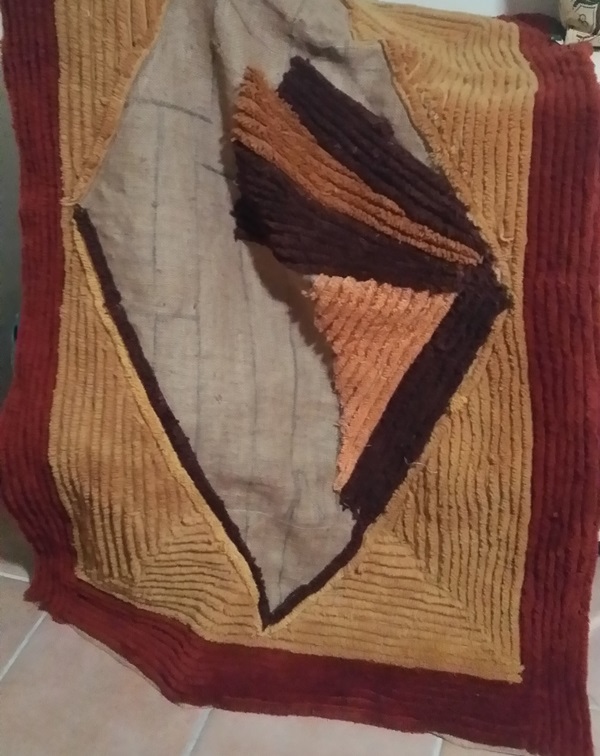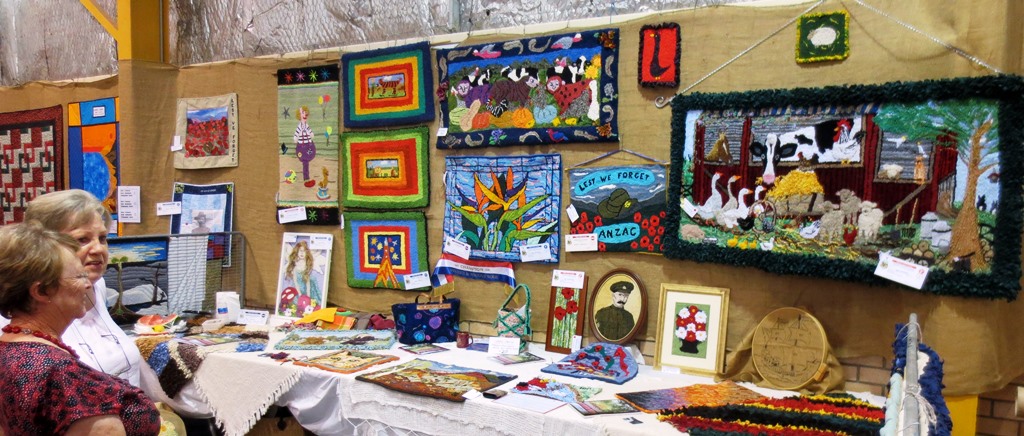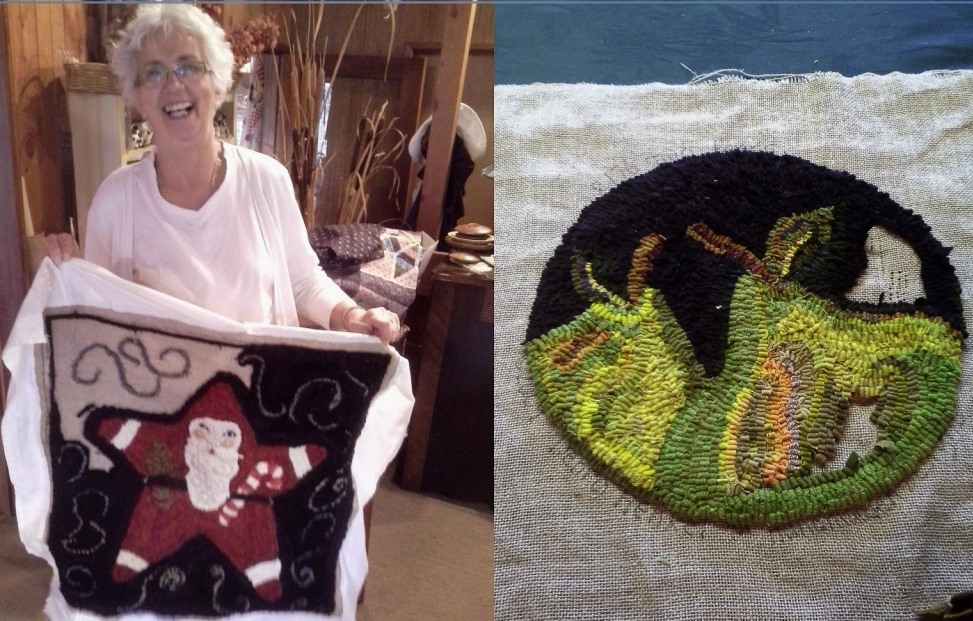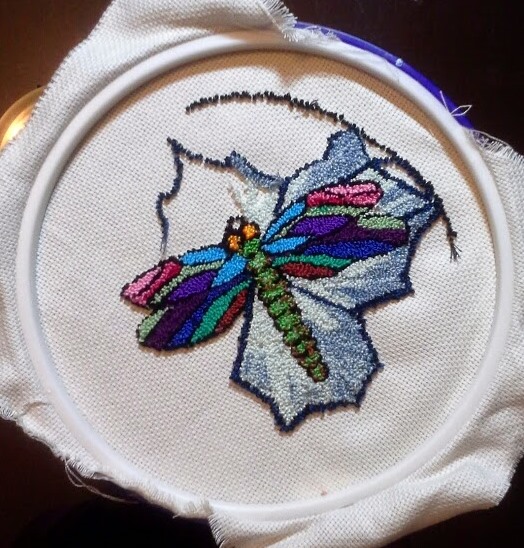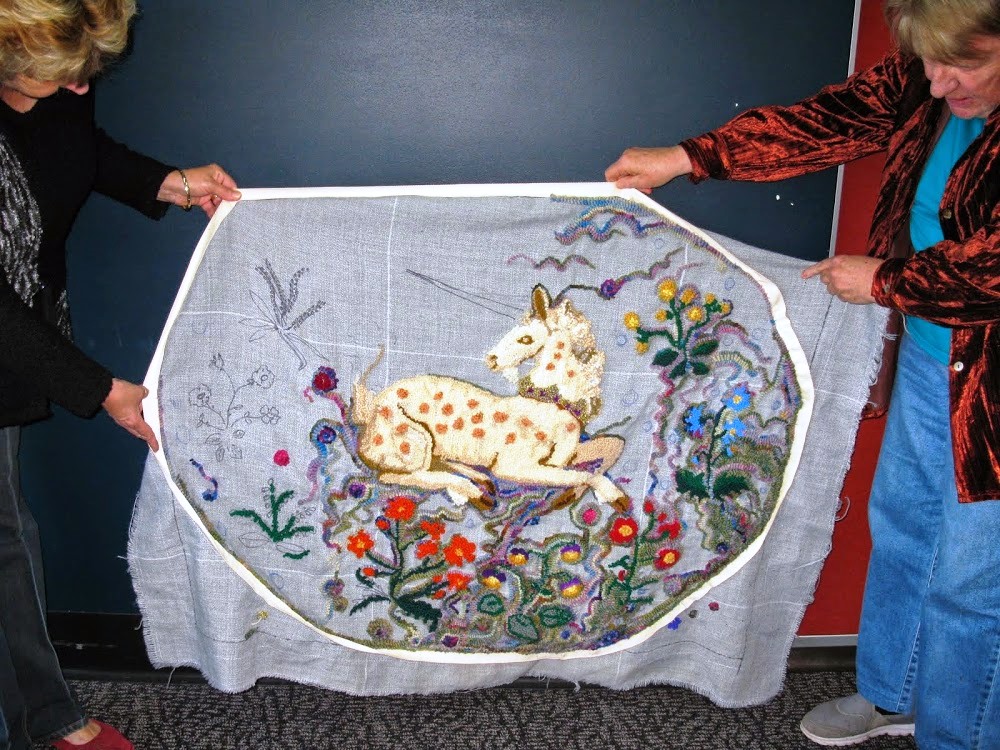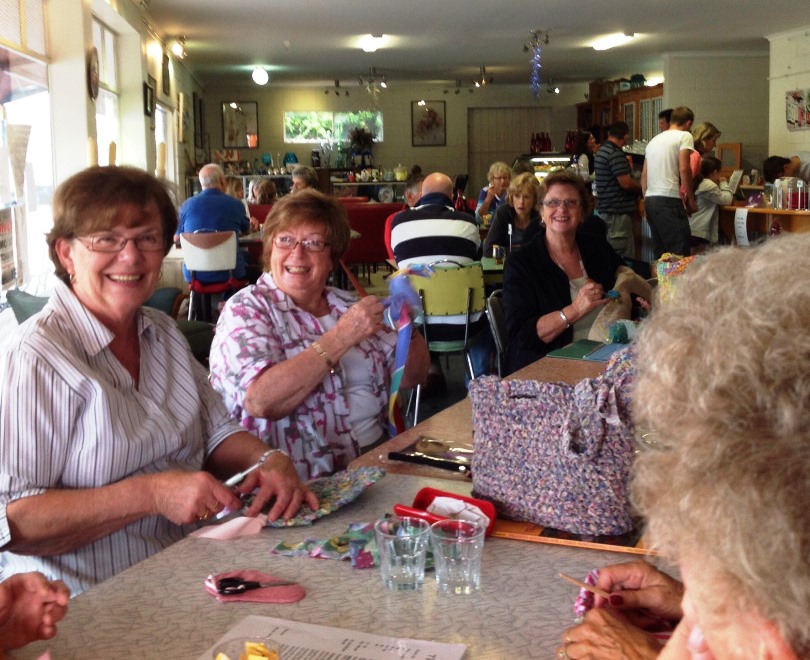Western Australia: Kira Mead’s Natural Dye Sampler

Kira dyed woolen blankets for her earlier Quillie rugs using food colouring – the results were colourful and bright.
Hoping for some more muted tones she headed to the garden and the pantry.
Below in her own words are her notes about these experiments: –
Notes : Natural Dye Experiments
This started out as being a small venture into natural dyes. I purely wanted to break up the plant material, put it in a jar and cover with hot water to see if dye would release. They all did this, but some of the liquid samples were too small to do any dyeing. But I was so encouraged by the colours released I went further to see how they would dye my 100% Wool Blankets.
I started with Plumbago, Agapanthus, Red Geraniums, Passionfruit Skin, Red Rose Petals, Eucalyptus Tree Bark, Eucalyptus Leaves and Bracken Leaves. On the day of the dyeing experiment I also made up some Coffee Dye from Coffee Pods, Tea Bags and a good sploosh of Red Wine.

All natural materials showed great promise, but some of the samples were too small to do justice to the natural dye experiment, but I will certainly be revisiting them when more material is available.
The dyes were extracted by cutting up the samples, putting them in a glass jar and pouring over boiling water and leaving for a day and night.
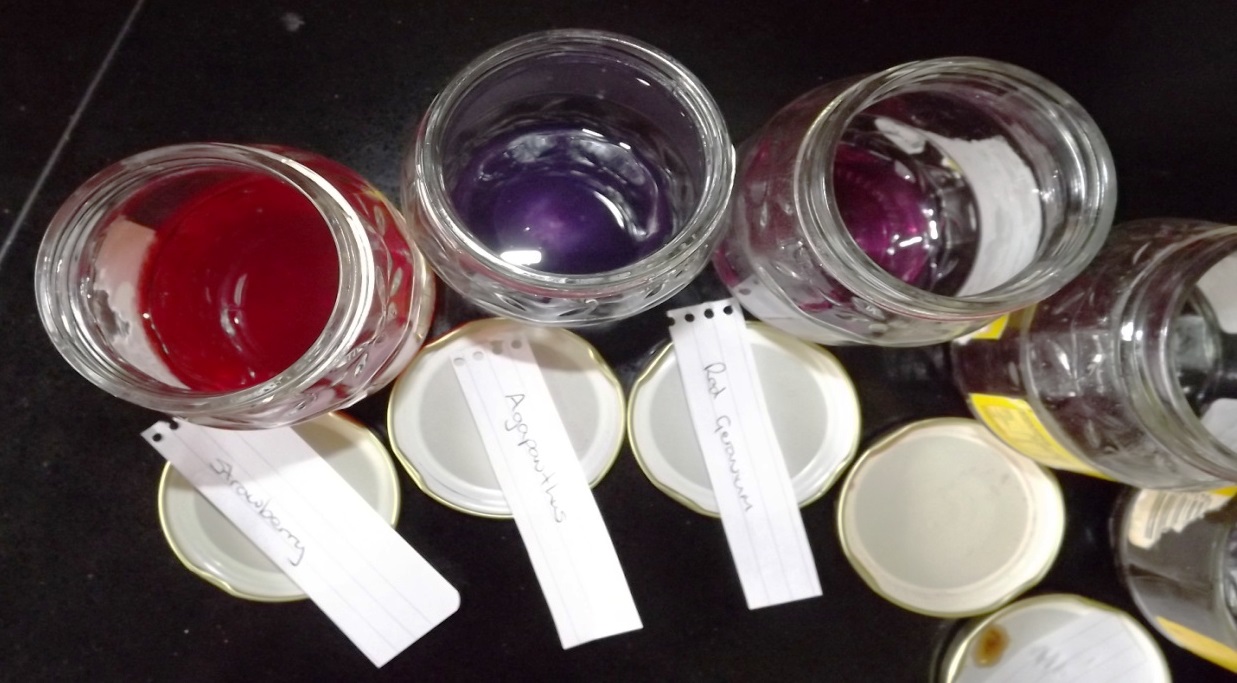

The Plumbago was a lovely light violet, but not enough to dye with. Some of the others like Agapanthus and Red Geranium I proceeded with, but there wasn’t enough dye liquid to do any kind of justice to it. Next time I will get greater quantities and simmer on the stove top.
In the morning I soaked the off white wool blanket in a mixture of quite hot water and citric acid for an hour. I had a sink full of hot water and added two large teaspoons of citric acid. I have found from dyeing with food colouring, that this holds the colour well.

Material contents have been drained from the glass jars and liquid put in a saucepan on the stove. Small sample strips of wool have been added to the liquid. I have only simmered until the liquid ran dry.
Normally I would simmer for 45 minutes and then proceed with washing, but for the natural dyes I would like to try leaving overnight to get a deeper colour.
Wool sample has been taken from the stove and pictured in a wet state.
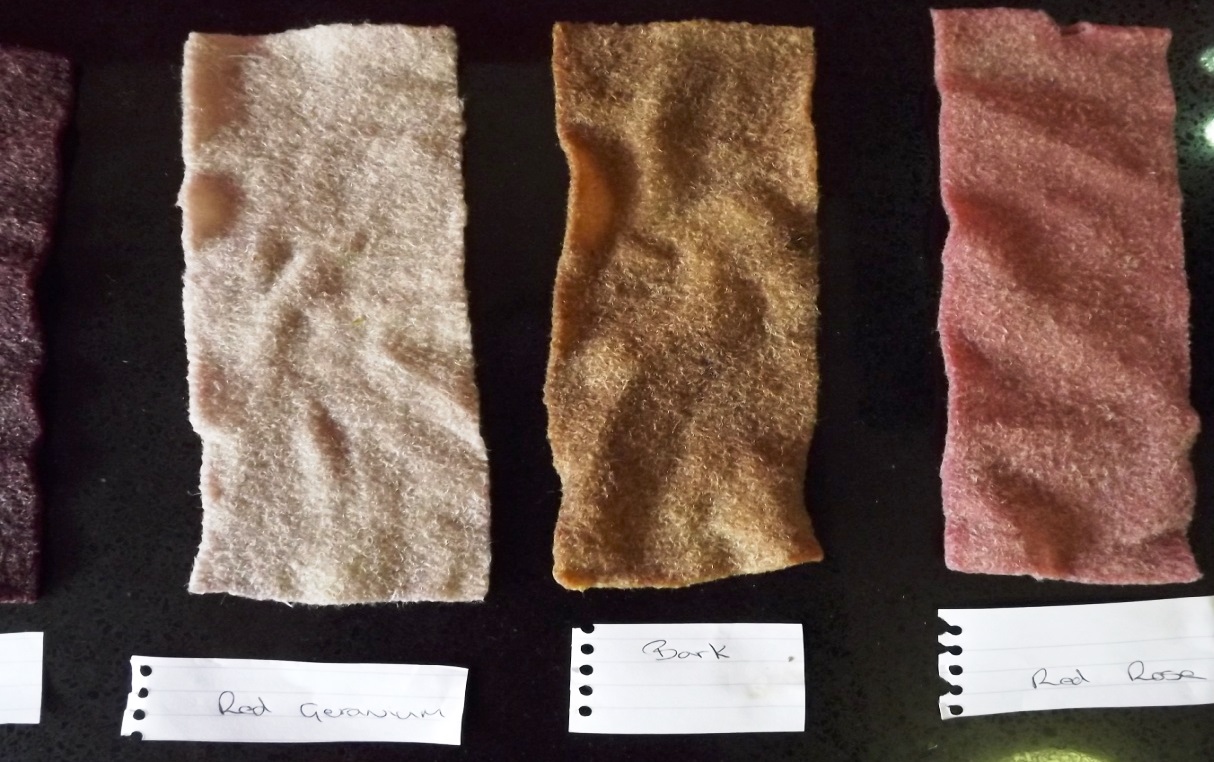
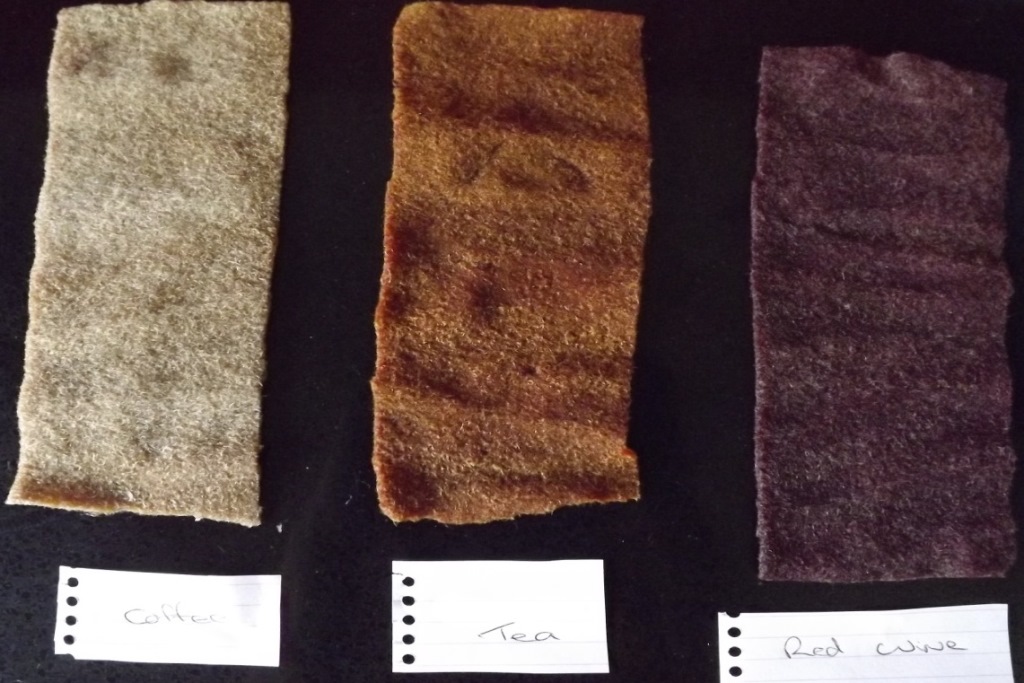


Wool samples have then been hung to dry outside.
When dry wool samples have been washed in lukewarm water with wool wash and once again hung outside to dry.
A lot of the samples lost a lot of colour, I think due to them not having enough time on the stove to soak in the colour and not enough sample liquid. Below is wool dyed and dried.


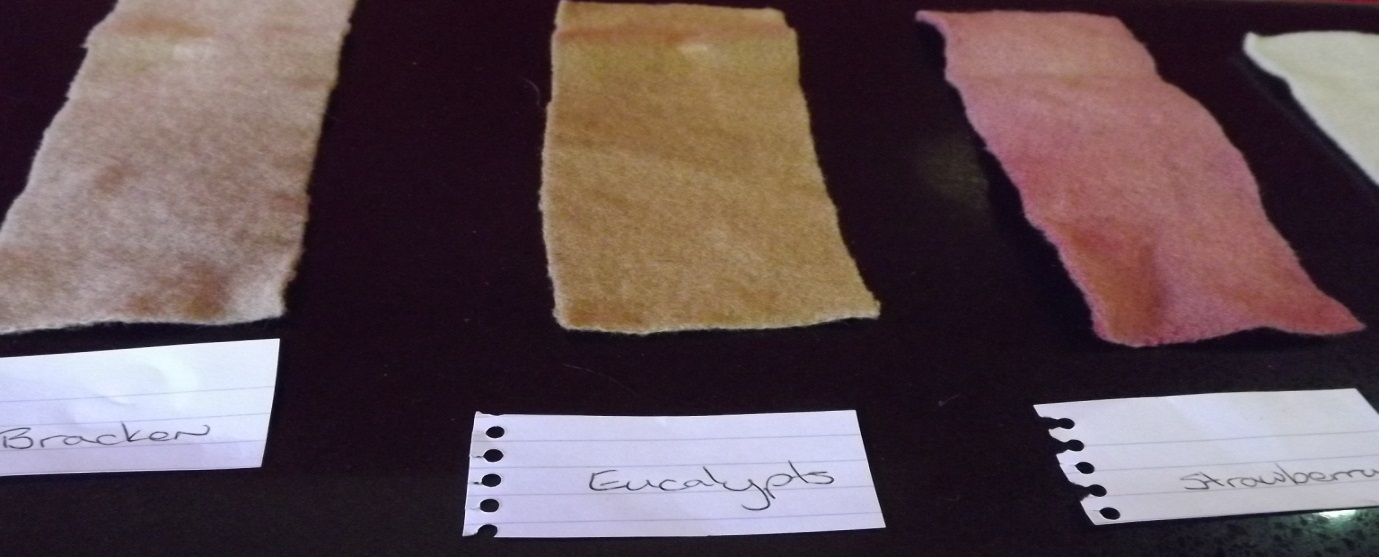
I’m a little disappointed nothing turned out Green or Blue. I thought Bracken was supposed to produce Green. Mine turned brown. I was hoping Agapanthus would give me Blue, but this needs further exploration and more liquid dye.
The stand out winners were the strawberry Tops, Tea Bags, Red Wine and the Eucalyptus Leaves.
I would like to add that the Strawberry Tops caused the most amazing smell to waft through the house.
Even though this was a quick experiment and I didn’t initially intend to dye any material, those four came out with good colours which will only get better with a bit more time in the pot.
+ + +
 This wall hanging Ties that Bind was destined to be shown at the Western Australian Fibre & Textile Assn members’ exhibition
This wall hanging Ties that Bind was destined to be shown at the Western Australian Fibre & Textile Assn members’ exhibition 




